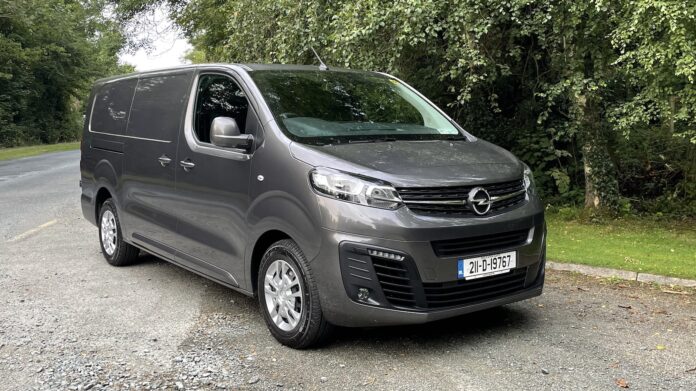15/08/2021 The Opel Vivaro-e van is the electric powered sister of the Peugeot, Citroen & Toyota mid-sized one tonne vans. Our test van is in ‘L2H1’ guise and features Opel’s level 2 trim ‘Sportive’ trim.
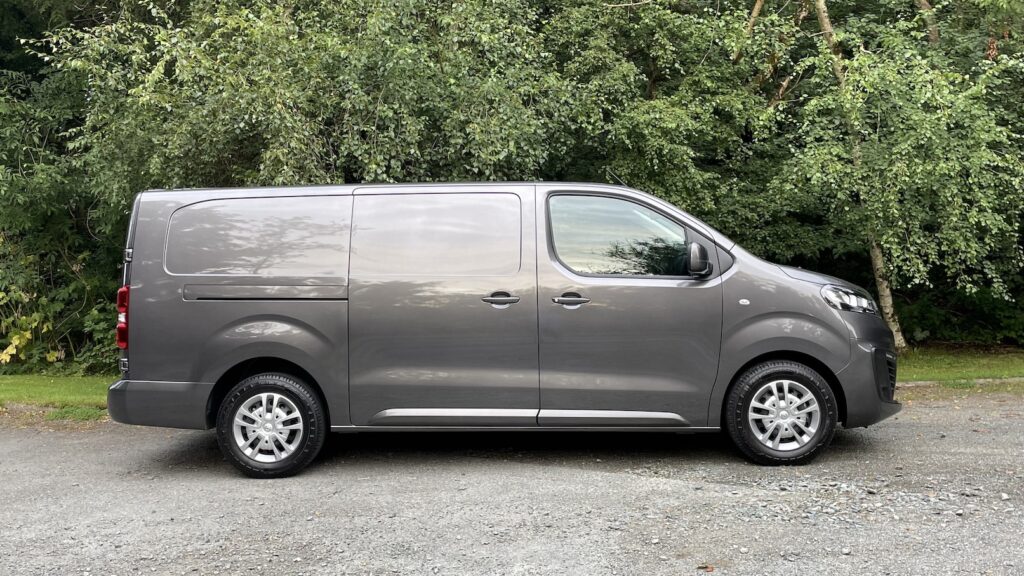
The Vivaro-e has a payload capacity of 1-1.2 tonnes depending on the version. A 136hp electric motor is standard in the Vivaro-e. There are three selectable driving modes, electrical regenerative braking and a speed limiter set to 112km/h (70mph) designed to aid lower electrical consumption. The standard rechargeable battery has a 50kWh capacity that in turn offers up to 230km range from a full charge. If you need a greater range a 75kWh battery pack option is available with a 330km max range. – although this added capacity adds weight and impacts the payload. The on-board AC battery charger has a 7.4kW ability. The Vivaro-e’s AC/DC combo ‘CCS’ plug socket can take a fast charge at a rate up to 100kW. The high-energy density 50kWh/18-module battery can can charge from empty to 80% in 30 minutes and the 75kWh/27-module battery in 45 minutes.
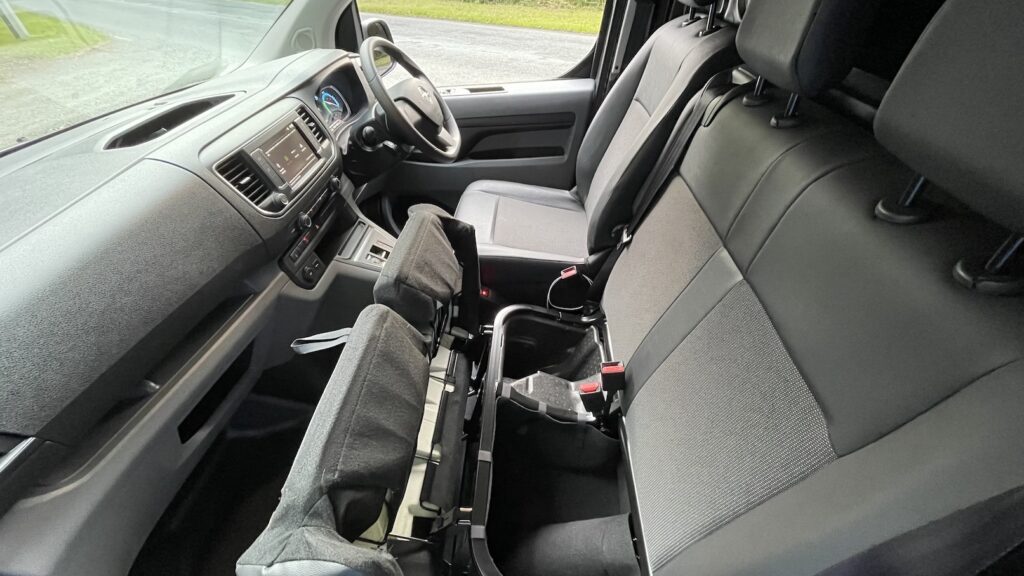
Like all electric vans designed to do shorter urban runs the ideal customer for the Vivaro-e will have a daily workload that falls below 200km and will be more than covered by an overnight charge – even in winter when all EVs’ range significantly drop.
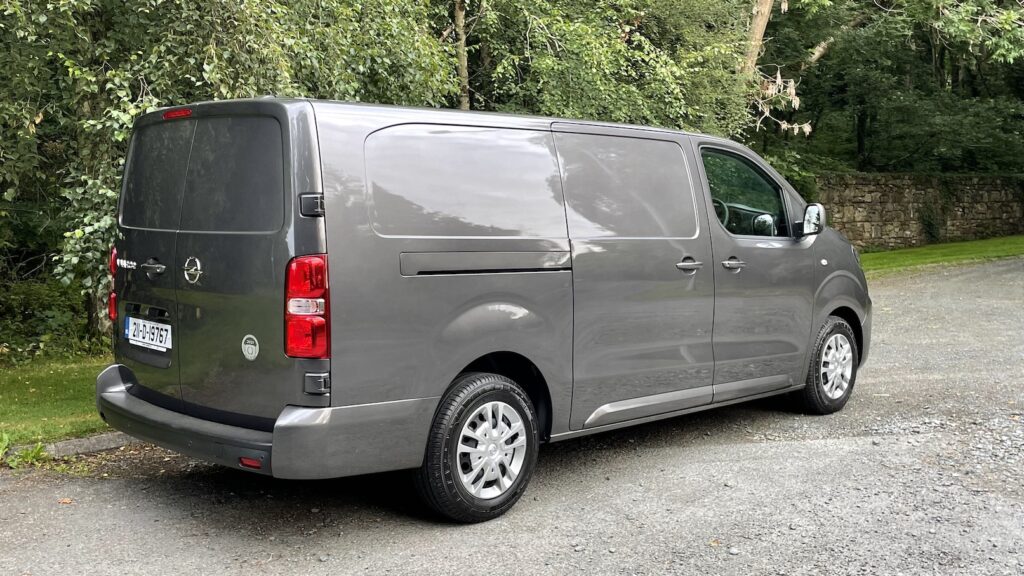
Our Moonstone metallic Grey van looks like its siblings with only a badge or two declaring its green credentials. The load area is as per any diesel or petrol van so panelling can be fitted or transferred with ease. All of the clever electrical bits and pieces are neatly hidden away under the floor and under the bonnet. Driving the electric Vivaro couldn’t be easier or more relaxing. The lack of diesel engine vibration and the resulting quietness experienced in the cabin will be loved by any driver and their crew. A single automatic gear takes the Vivaro-e up to its limiter with just a slight acoustic whine. Regenerative braking helps recoup some power to the battery. Electric vans are the ideal urban delivery workhorse. They produced zero emissions at their non existent tail pipes and make for a happier operator and crew. The only annoyance we experienced was with the limiter on the motorway. Not being able to do 120km/h was a little stress inducing at times – especially on overtakes. Fleet managers/owners can interact with the Vivaro-e’s sophisticated sensors and vehicle data monitoring systems to get a detailed overview and projection of driving conditions, range and energy available.
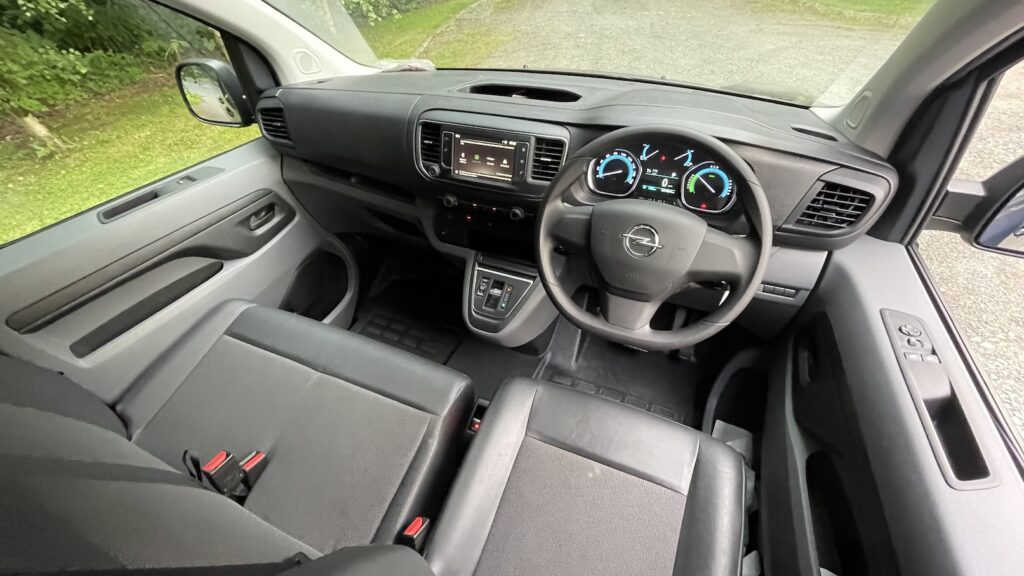
‘Edition’ is the entry trim and it features: 3 seats with storage under passenger bench, 6-way driver’s seat with armrest, driver and passenger airbags, electric parking brake, cruise control, full size spare wheel, 3.5” colour dashboard display, remote central deadlocking, two side sliding doors, electric ‘one-touch’ front windows, electrically adjustable and heated door mirrors, stereo with 5” display, USB socket, four speakers, Bluetooth phone connection and audio streaming, steering-column remote audio controls and digital audio (DAB). ‘Sportive’ trim adds: air conditioning, 7” colour touchscreen with smartphone projection, body coloured bumpers (except on Red GEO), front fog lights, LED daytime running lights, rear parking sensors automatic lights and wipers, electric folding door mirrors, acoustic windscreen and full-size wheel trims.
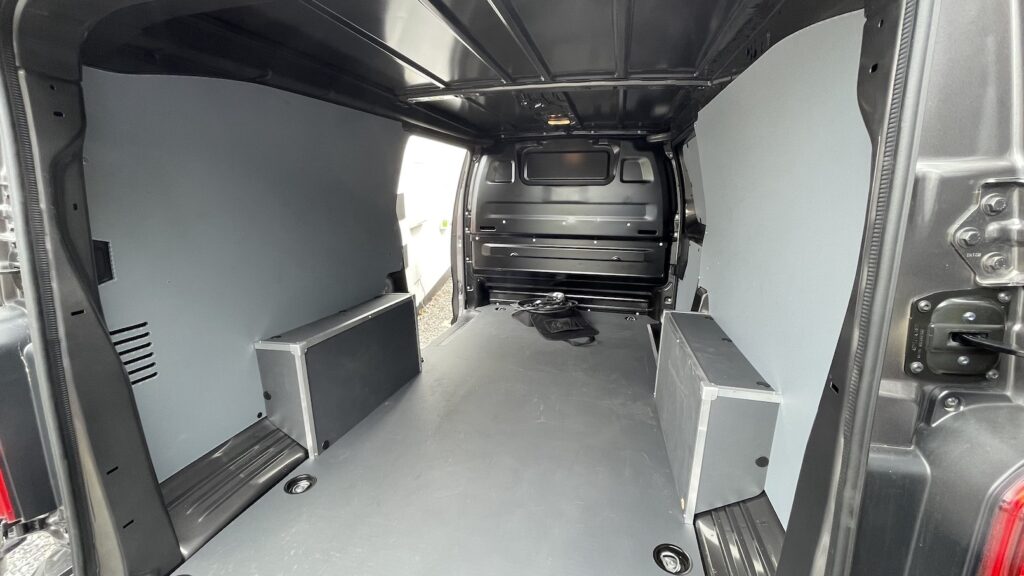
Retail Pricing starts from €36,895 (L1H1/including taxes) rising through many variants up to €46,395 for the big battery Sportive (std. payload) L2H1 with the 75kWh battery pack. Electric vans are the future in urban areas and the Opel Vivaro-e (and its electric siblings) are up to the task. Michael Sheridan


